Organic Cannabis Nutrients: Composting
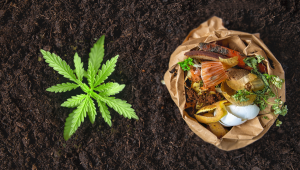
- 1. What is composting?
- 2. Why compost?
- 3. Benefits of composting
- 3. a. Good for the environment
- 3. b. Recycles waste
- 3. c. Improves soil
- 3. d. Adds beneficial microorganisms to your soil
- 4. The basics
- 4. a. Composting bin
- 4. b. Organic matter
- 4. c. Taking care
- 4. d. Patience
- 4. e. Compost heap manteinance
- 4. f. Common compost issues
- 5. What should i compost?
- 5. a. What not to compost?
- 6. How to use my compost?
- 7. Topdressing your cannabis plants with homemade compost
- 8. In conclusion
Composting is an organic method of providing nutrients to the soil, this can not only result in better-tasting flowers but will help you reduce waste, it’s a win-win situation for everyone. Many modern growers are used to the same routine; they sow feminized seeds into the soil and proceed by feeding their plants bottled nutrients according to a strict schedule. While this method works incredibly well and produces consistent results, it focuses entirely on plant health and often neglects the state of the soil. For those growing indoors in pots that replace the growing medium every cycle, this isn’t too much of a big deal.
However, by leveraging the power of living soil, growers don’t need to throw away their soil and constantly buy more every single time they want to grow more weed. Plus, addressing soil health plays a major role outdoors, especially when growing in raised beds or directly in the ground. By focusing on what you feed the soil and the microbes that live within it, you don’t have to put as much effort into getting exact amounts of specific nutrients when it comes to feeding your plants; the soil microbes will do this job for you. When it comes to building healthy soil packed with microbes and nutrients, compost is king! This black gold contains many essential components that can make even poor soil a thriving bed of fertility.
1. What is composting?
Composting consists of a process that turns food scraps into nutrient-rich soil, this happens because the microorganisms break down the scraps and make the nutrients available for plants to absorb. The process of composting relies on bacteria, moisture, and oxygen, by having these elements together, and the proper organic matter you provide the perfect environment for the bacteria to break down the organic material which creates heat.

The heat emitted helps microorganisms1 “activate” and stat decomposing the organic matter, while oxygen and moisture accelerate decomposition. This way of reusing food waste isn’t exclusive to cannabis, it has been used for years and years by cultivators who want to reduce waste while also benefiting, either by saving money or developing richer soil. Once your dig into the world of composting, you’ll discover an incredibly complex scientific field. There are many different ways to compost food scraps and garden waste. Hot composting helps to drastically speed up the process but requires a lot of attention and the right amounts of key ingredients.
Cold composting, on the other hand, takes much longer but offers more of a passive approach that doesn’t require frequent monitoring. To simplify composting, you can think of everything that you add to it as microbe food. The organisms within your compost pile literally eat these ingredients. Over time, they break down the large molecules in banana skins, carrot ends, and wood chips, into tiny molecules that take on the appearance of a rich black substance known as humus. At this stage, you can add this finished product directly to the top of your garden beds, or make different extracts and apply them as soil drenches or foliar sprays. It’s loaded with plant nutrients and beneficial microbes that can help to combat a range of diseases.
2. Why compost?
Composting is a cheap and easy way of making soil, when done properly you will end up with a living ecosystem that contains all the macro and micronutrients (and even more) than what you will get when buying organic nutrients at a grow shop. Making compost not only improves the texture of soil but also acts as a slow-release nutrient source which, unlike synthetic nutrients, won’t burn your plants, by doing this you’re not only feeding your plants with top-quality nutrients but are also helping reduce the waste that goes into landfills.
3. Benefits of composting
Good for the environment
Because you are using a natural alternative to synthetic nutrients you’re helping reduce chemicals in the soil and even though it may not seem like a lot, you’re making a difference.
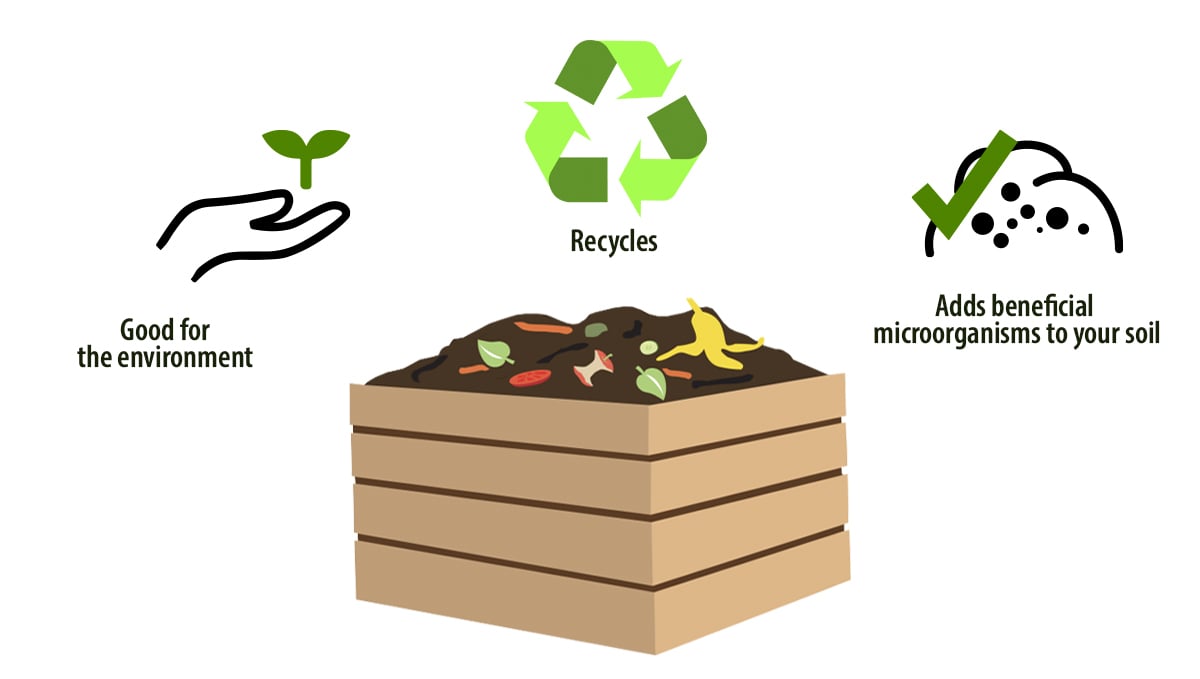
Composting helps soil hold carbon dioxide, this decreases gas emissions, revitalizes exhausted soils, and reduces erosion.
Recycles waste
Composting can reduce up to 30% the amount of waste you produce. This makes a huge difference because when your kitchen scraps go to a landfill they don’t have the appropriate conditions to decompose and end up producing methane, which is toxic to us.
Improves Soil
Composting doesn’t just improve plant health. It has the power to transform even the most nutrient-lacking soils. Not only does compost contain plenty of nutrients, but it helps soils to hold onto them. Much like the clay fraction of soil, compost possesses a net negative electric charge. This allows it to hold onto positively charged ionic nutrients, such as ammonium, calcium, and magnesium. Compost also increases aeration, drainage, and general soil structure.
Adds beneficial microorganisms to your soil
Microorganisms help aerate the soil, they break down the nutrients to make them more available and can prevent plant disease.
4. The basics
You don’t really need a lot to start from scratch, the basic materials are a composting bin and the scraps you need to start the process, although something you will need and cannot buy it is patience and taking good care of the microorganisms.
Composting bin
To start composting you really don’t need a lot, first, you need to know where you want to do it. Composting can be done indoors in a plastic bin, wooden box, or in a cube made out of bricks, or outdoors on top of a plastic sheet or directly on the soil.

The place where you’re be going to compost can easily be done by yourself and doesn’t need to be fancy at all, as long as you build a bin-like structure that can be covered to keep the moisture in you’ll be fine.
Organic matter
Compost consists of decomposing organic matter1 to make the nutrients available in the soil so the organic matter is vital for your it to work, you can choose which fruits and vegetables among other things you compost but in general there are two types of organic matter: Green matter and brown matter.

A balanced ratio between both of them is essential for the microorganisms to thrive, there isn’t a specific type of fruit that’s better. If you’re growing cannabis you have to provide Nitrogen, Phosphorus, and Potassium-rich scraps which are the macronutrients and can be found on:
- Nitrogen: Lettuce, spinach, arugula;
- Phosphorus: Eggshells, manure;
- Potassium: Banana, cucumbers, cabbage.
Remember that organic matter attracts flies and cockroaches which can lay their eggs in your compost bin, so to be safe have a lid, or a mosquito net on top to avoid this.
Taking care
Inside the bin, there are living microorganisms so you should make sure they’re indeed alive.
Every 1-2 weeks you have to make sure your compost is humid, remember that too much water may kill the microorganisms but make sure it’s properly humid and if not, water it lightly.
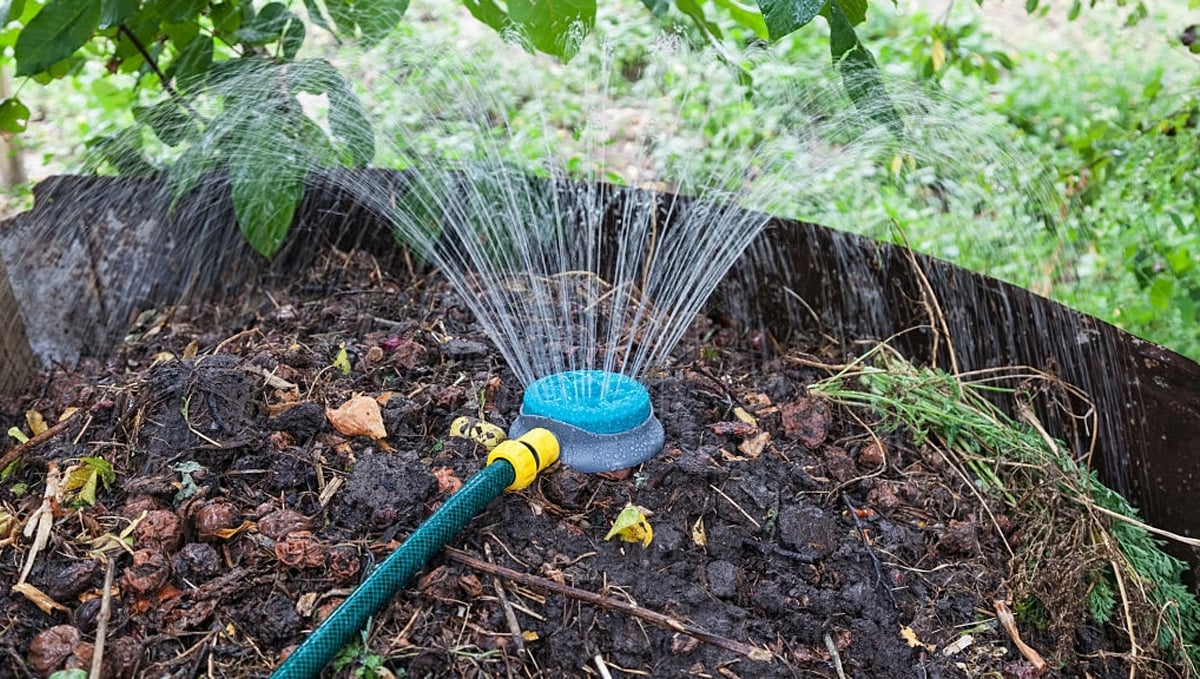
Your compost bin doesn’t need too much sunlight, ensures they’re under the shade, and have proper drainage because decomposition produces liquid that can end up drowning the microorganisms.
If you want to accelerate the process even more, you can vermicompost, this process uses worms that will eat the food scraps and will produce humus (aka worm castings).
Patience
Out of everything, this is the hardest part. Composting takes time, it’s not going to be ready for use overnight, the decomposition process takes at least 1 month so be patient, the longer you allow the microorganisms to work, the more concentrated it will be so let them do their thing is essential.
Compost Heap Manteinance
Thankfully, compost heaps do not need a huge amount of maintenance. The microorganisms do most of the hard work by breaking down all the organic matter all by themselves but keep in mind that using a pitchfork or shovel to turn the pile will help speed up the composition process. This can be done once every 10 days or so.
The length of time that it takes a compost heap to be ready to use is a bit of a contentious and grey area. Some experts say that only 30 days are required, others claim that 6 months or more is needed for proper organic breakdown. If you live in a warm humid climate the process will be sped up, but in general, it is best to turn it every 10 days and see how well the decomposition is going.
Common Compost Issues
There are a few common issues that can plague a compost pile. Luckily, most have an easy fix.
Soggy compost
Overly soggy compost heaps usually don't contain enough oxygen for the micro-organisms to thrive, and (in severe cases) cause them to die. There may be an unpleasant smell that comes with an overly wet pile. To fix the issue you simply have to aerate the soil well with a pitchfork and add more dry material such as hay or dried leaves.
The pile smells of ammonia
This is a sign that there is way too much nitrogen in your compost. By adding dry, carbon-dense additives you can quickly decrease the nitrogen levels and save your compost pile.
The pile won't heat up
This is most probably a result of the compost becoming too dry. It can be a little tricky trying to keep the pile wet enough without overwatering it, but with a bit of practice and experience, it becomes a whole lot easier. The golden rule is to keep it moist to the touch, without it becoming soggy or waterlogged.
The compost is too coarse and won't totally breakdown
This isn't so much of an issue, but some cultivators prefer fine compost. Certain food scraps, like corn cobs and eggshells, can take months to totally break down. If this is an issue for you, then grab a large garden sifter and run the compost through that before adding it to your garden.
4. What should I compost?
What you put in your compost depends on what you aim for and what you can find but have in mind that all compostable materials are either carbon (brown matter) or nitrogen-based (green matter) so you need to have a balance of around 50/50 for your composting to work.
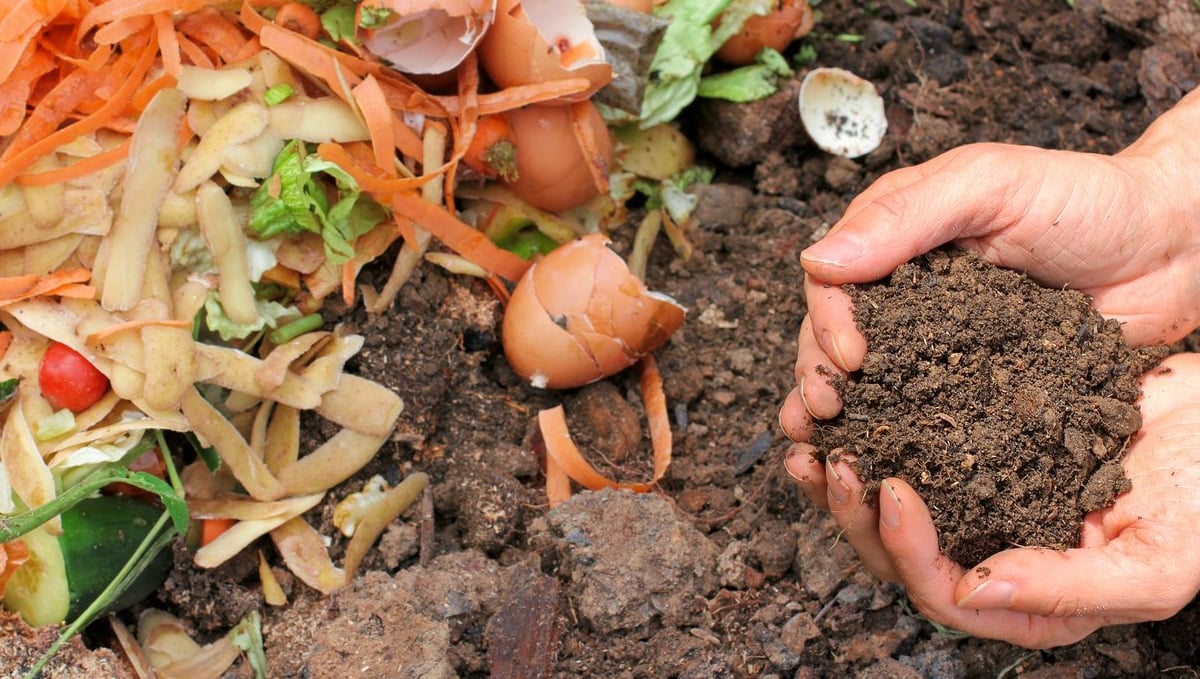
Green matter2 provides nitrogen and is a source of protein whereas brown matter is carbon-rich which helps the microorganisms decompose the scraps and also helps aerate the compost bin.
Here’s a general guideline of green and brown matter you can use in your compost bin:
| Carbon (brown matter) | Cardboard | Corn cobs | Dry leaves | Newspaper | Sawdust | Hay | Wood chips |
|---|---|---|---|---|---|---|---|
| Nitrogen (green matter) | Coffee grounds | Fruits and vegetables | Grass | Seaweed | Flowers | Weeds | Manure |
These are just suggestions, you can use whatever you have available without a problem as long as you respect the 50/50 ratio. Have in mind that the microorganisms need carbon to obtain energy and need nitrogen to decompose and reproduce so you should always have brown matter in your compost bin.
What not to compost?
- You should not compost meat, fish, or bones, there are other techniques (bokashi) that focus on decomposing these things but in this composting setup, it will attract bugs.
- Avoid composting diseased plants, diseases like the tobacco mosaic virus can stay in the soil, infecting all the plants you’ll be using your compost with.
- Never use cat or dog feces.
- Citrics can be bad for the microorganisms so avoid composting lemon, tangerine, or oranges.
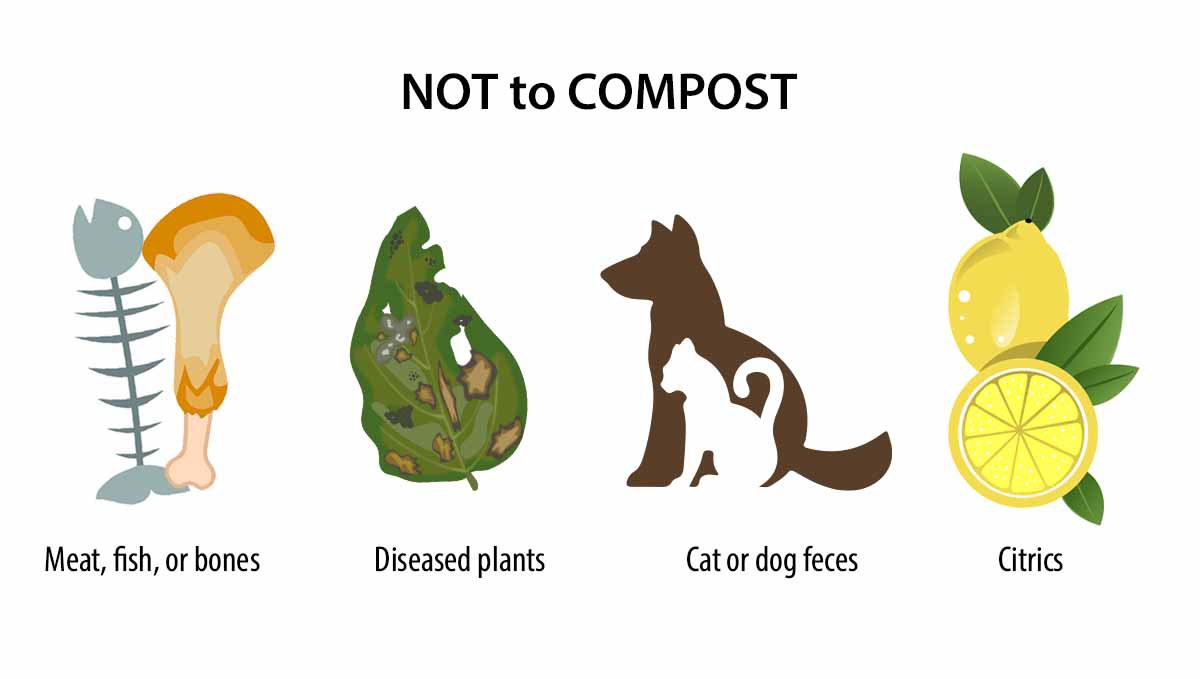
5. How to use my compost?
Your compost can be mixed with soil but the amount will depend on how long you let it decompose, you can use it as soon as you hit the 30-day mark but letting it go for longer will result in a higher concentration of nutrients which will result in needing less compost per plant.
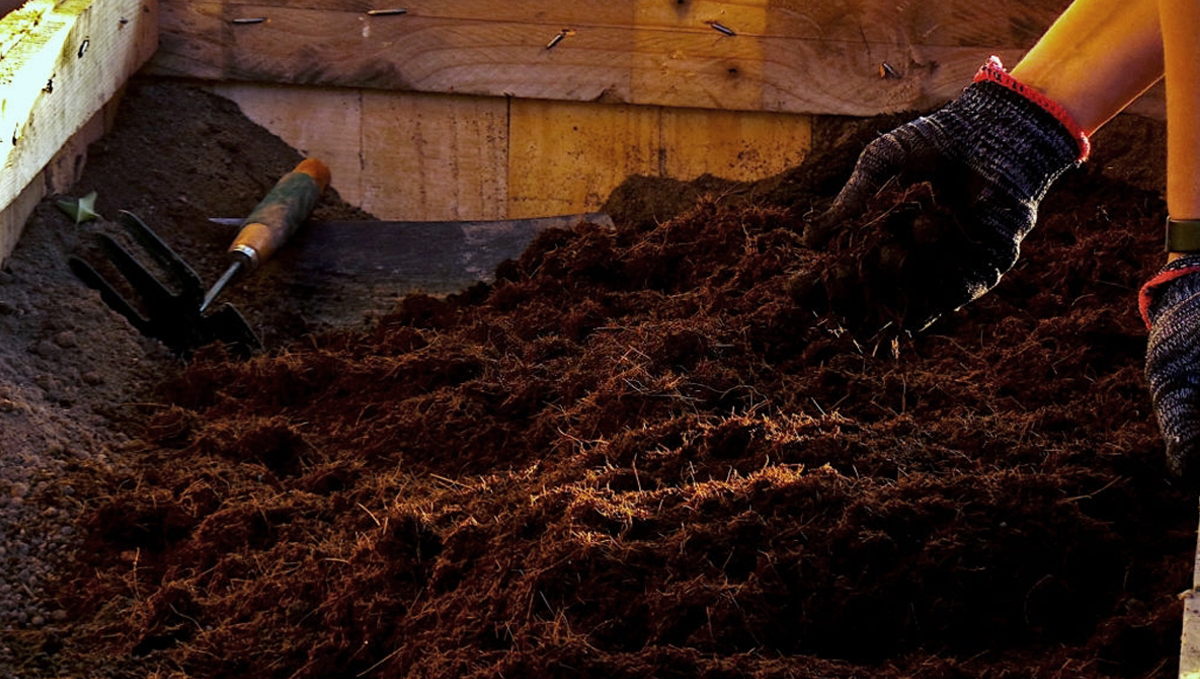
You don’t have to worry about it burning your plants so the amount you mix with soil depends on how long your cannabis plants take from seed to harvest, as a guideline you can mix 50% compost with 50% soil and add more if you think it’s needed, remember that compost works as a slow-release fertilizer so you can safely add it throughout your plant’s growth if needed.
If you've left your compost for a long time and it's strong, you can mix 1 part compost with 4 parts soil, for example, if you're mixing 1k of soil it should be 800g of soil with 200g of compost.
6. Topdressing Your Cannabis Plants With Homemade Compost
While there are many ways to introduce homemade compost to your cannabis plants, our favorite method is to topdress. What is topdressing? It is pretty simple and is exactly what it sounds like. To topdress a weed plant with compost all you have to do is add a layer of compost around the base of the plant. Compost is a slow-release fertilizer, and by top dressing, you slow down that release period even further. After topdressing all you have to do is regularly water your plants as you usually would. The watering will enable the compost to naturally break down and enter the growing medium where the released nutrients will help keep your plant healthy and thriving throughout the entire growth cycle. Keep in mind that top dressing will not help correct deficiencies.
7. In conclusion
Composting is a cheap and effective way to feed your plants, because you can make it however you want it you can tailor fit it to your needs and the best part is you can do it with cheap leftovers found in every household. If you know more about composting please leave us a comment below!
External References:
1. Compost and Compost Tea Microbiology: The “-Omics” Era - St. Martin, Chaney & Rouse-Miller, Judy & Thomas, Gem & Vilpigue, Piterson. (2020).
2. Composting parameters and compost quality: a literature review - Azim, K & Soudi, Brahim & Boukhari, S & Périssol, Claude & Roussos, S & Thami-Alami, Imane. (2020).
This post was most recently updated on April 7, 2022.








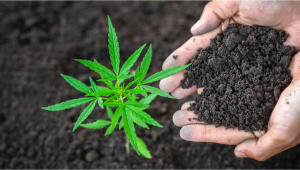
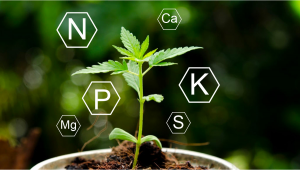

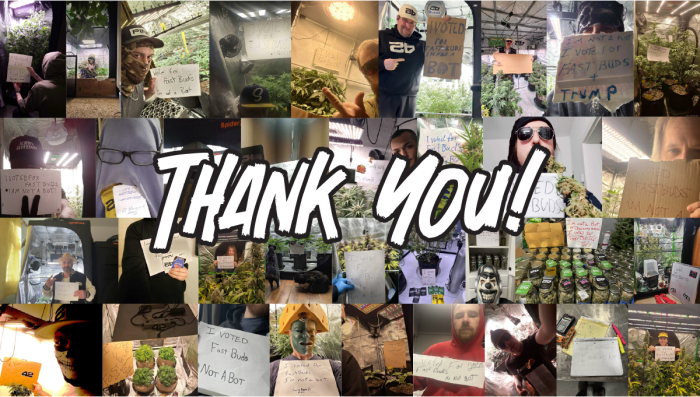

Comments